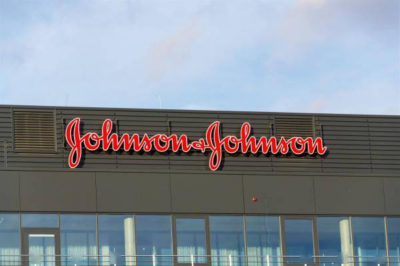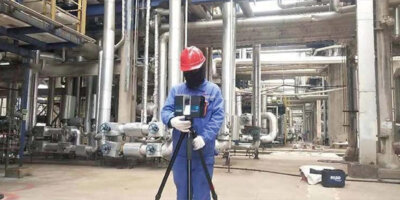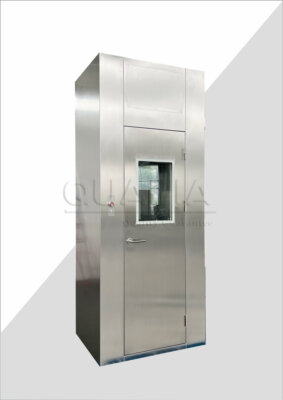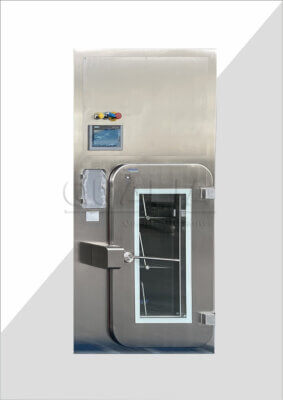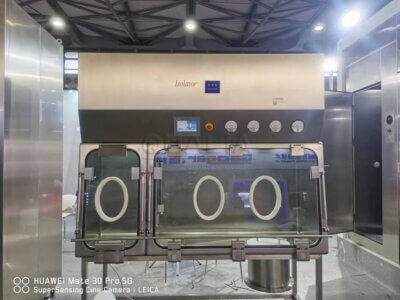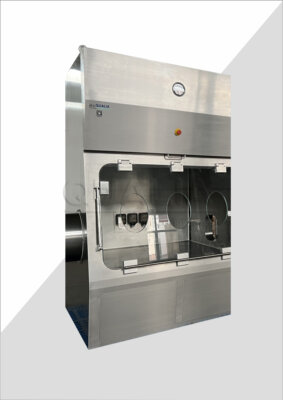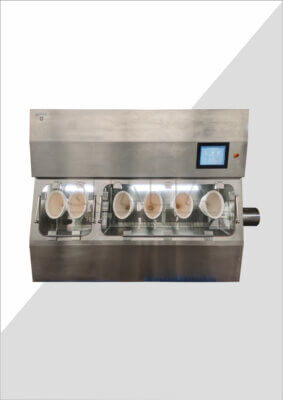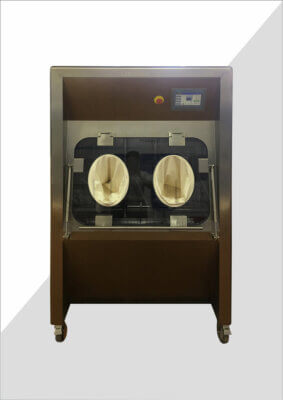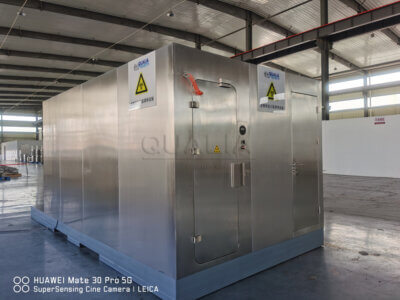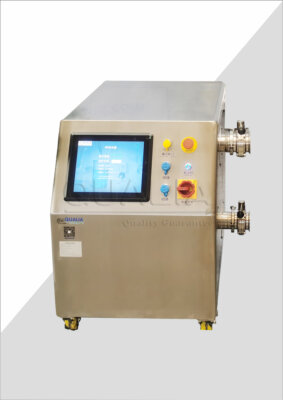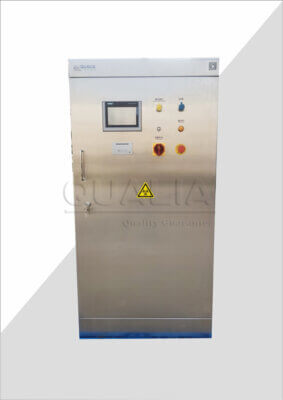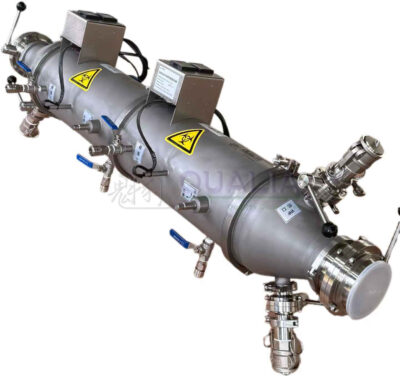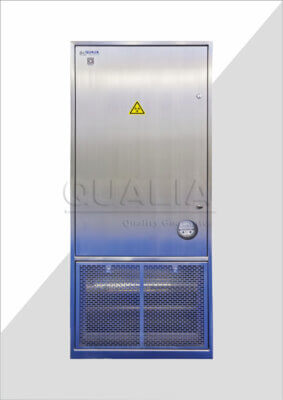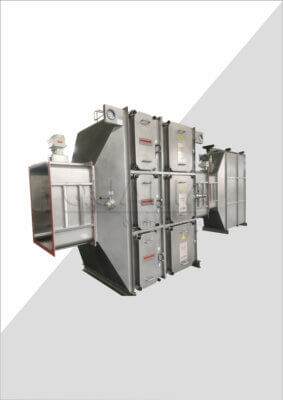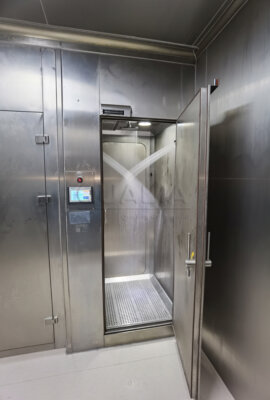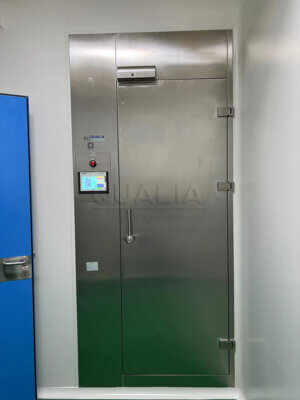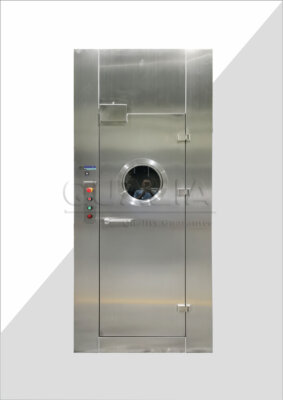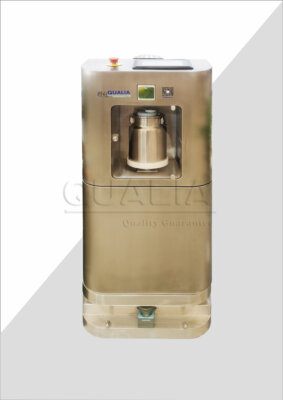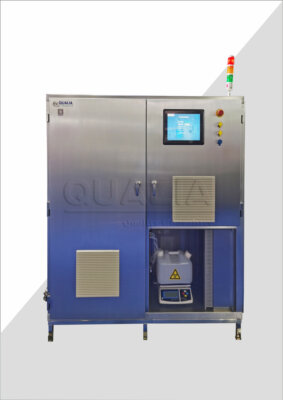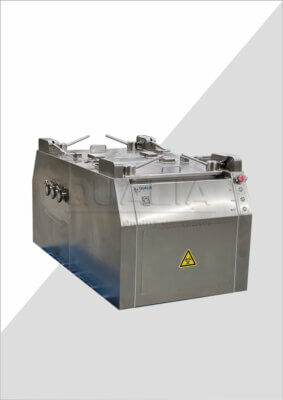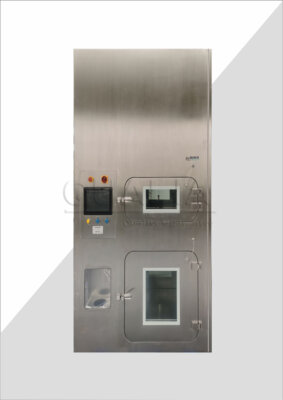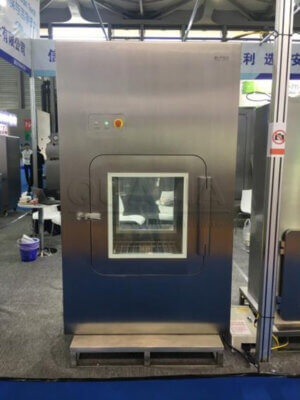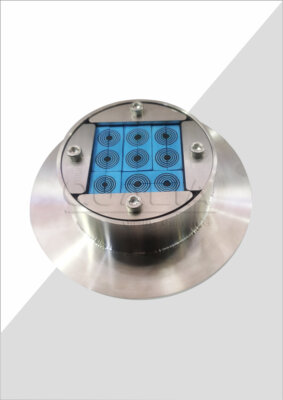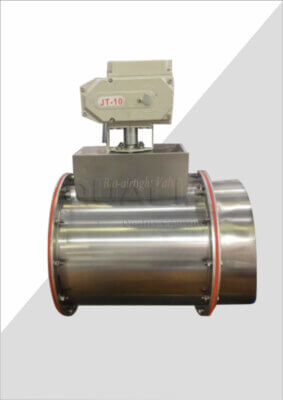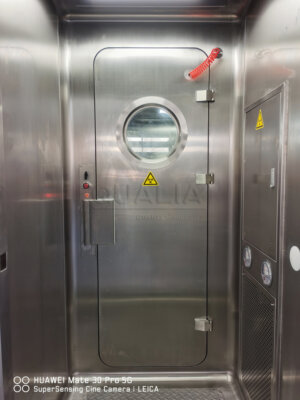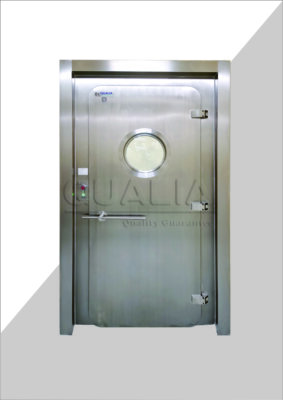Modern containment facilities face increasing pressure to maintain sterile environments while ensuring operational efficiency. Whether you’re managing a pharmaceutical manufacturing plant, research laboratory, or cleanroom facility, the integrity of your containment systems directly impacts product quality, regulatory compliance, and operational costs. Traditional door systems often fail to provide the precise environmental control required for critical applications, leading to contamination risks, energy inefficiencies, and costly downtime.
The consequences of inadequate containment systems extend far beyond immediate operational disruptions. Contamination events can result in product recalls, regulatory violations, and significant financial losses. Energy inefficiencies from poorly sealed systems can increase operational costs by 15-30% annually, while frequent maintenance requirements create ongoing workflow interruptions that impact productivity and profitability.
This comprehensive guide explores how APR door systems with mechanical seals provide superior containment solutions, offering detailed installation procedures, setup protocols, and maintenance strategies that ensure optimal performance. We’ll examine technical specifications, troubleshooting methods, and industry best practices that help facilities achieve reliable, long-term containment performance.
What are APR Door Systems and How Do They Work?
APR (Air Pressure Regulation) door systems represent a sophisticated approach to environmental containment, utilizing mechanical seals to maintain precise pressure differentials between controlled spaces. These systems integrate advanced sealing technology with automated pressure regulation mechanisms, creating barriers that prevent cross-contamination while maintaining operational accessibility.
The core functionality revolves around creating and maintaining controlled pressure differentials across the door interface. When properly installed, these systems can maintain pressure differentials ranging from 0.05 to 0.5 inches of water column, depending on application requirements. This precision level ensures that airborne contaminants remain contained within designated areas while preventing unwanted infiltration of external particles or microorganisms.
Mechanical Seal Components and Function
The mechanical seal assembly consists of multiple components working in concert to achieve reliable containment. Primary sealing elements include elastomeric gaskets, compression mechanisms, and pressure-responsive actuators that adjust seal compression based on differential pressure readings. These components are manufactured from materials specifically selected for chemical compatibility and long-term durability in demanding environments.
Mechanical seal setup requires precise calibration of compression forces and pressure thresholds. The system monitors differential pressure continuously, automatically adjusting seal compression to maintain optimal performance. This dynamic response capability distinguishes APR systems from static sealing solutions, providing consistent performance even as environmental conditions fluctuate.
Pressure Regulation Technology
Advanced pressure regulation systems utilize multiple sensors and control algorithms to maintain stable containment conditions. These systems can respond to pressure variations within milliseconds, preventing transient breaches that might occur during personnel or equipment transitions. The integration of fail-safe mechanisms ensures that system failures default to maximum containment mode, protecting critical environments even during power outages or equipment malfunctions.
| Component | Function | Performance Range |
|---|---|---|
| Primary Seal | Mechanical containment | 0.05-0.5″ WC differential |
| Pressure Sensor | Monitoring and feedback | ±0.001″ WC accuracy |
| Control Algorithm | Automated adjustment | <50ms response time |
| Fail-safe System | Emergency containment | 99.9% reliability rating |
Why Choose Mechanical Seal APR Door Systems Over Traditional Options?
The superiority of mechanical seal APR door systems becomes apparent when examining performance metrics, operational efficiency, and long-term reliability compared to conventional containment solutions. Traditional systems often rely on static seals and manual pressure regulation, creating vulnerabilities that can compromise containment integrity during critical operations.
Energy efficiency represents one of the most compelling advantages of APR systems. By maintaining precise pressure differentials, these systems eliminate the excessive air exchange rates required by traditional systems to achieve similar containment levels. Facilities typically experience 20-35% reductions in HVAC energy consumption after implementing APR door systems, translating to significant operational cost savings over the system lifecycle.
Performance Advantages and Operational Benefits
The dynamic sealing capability of APR systems provides consistent performance across varying operational conditions. Unlike static seals that can lose effectiveness due to thermal expansion, mechanical wear, or pressure fluctuations, APR systems continuously adjust to maintain optimal sealing performance. This adaptability ensures reliable containment even during high-traffic periods or equipment cycling that might challenge traditional systems.
Installation flexibility represents another significant advantage. APR systems can be retrofitted into existing openings with minimal structural modifications, reducing installation costs and timeline requirements. The modular design allows for customization based on specific application requirements, from basic containment needs to complex multi-zone pressure management scenarios.
Regulatory Compliance and Quality Assurance
Modern regulatory frameworks increasingly emphasize quantifiable containment performance and documentation capabilities. APR door systems provide comprehensive monitoring and data logging features that support regulatory compliance requirements. These systems generate detailed performance records, including pressure differential trends, seal integrity metrics, and system response times that demonstrate compliance with industry standards.
However, it’s important to note that initial investment costs for APR systems typically exceed traditional alternatives by 40-60%. While operational savings and improved reliability justify this premium over time, organizations must carefully evaluate budget constraints and payback period expectations when considering implementation.
How to Install APR Door Systems: Step-by-Step Guide
Successful APR door installation requires systematic preparation, precise execution, and thorough validation to ensure optimal performance. The installation process typically requires 2-3 days for standard applications, though complex multi-zone systems may require additional time for integration and testing.
Pre-installation preparation begins with comprehensive site assessment and environmental measurement. Installers must verify structural integrity, electrical power availability, and HVAC system compatibility before beginning physical installation. This assessment phase identifies potential challenges and ensures that all necessary resources are available to complete installation without delays.
Site Preparation and Structural Requirements
The installation site must provide adequate structural support for the APR door system, including mounting hardware and associated control components. Door frames require reinforcement to handle the additional loads imposed by mechanical seal systems, particularly during emergency sealing operations when maximum compression forces are applied.
Electrical requirements include dedicated power circuits for control systems, sensors, and actuators. Most APR systems require 120V/240V power with backup power connections for critical applications. Network connectivity may also be necessary for integrated monitoring systems or remote control capabilities.
Mechanical Assembly and Component Installation
The physical installation process begins with frame preparation and component mounting. Door system installation follows manufacturer-specific procedures, but generally includes frame assembly, seal installation, actuator mounting, and control system integration. Each step requires precise alignment and calibration to ensure proper operation.
Critical installation parameters include:
- Frame alignment tolerance: ±0.5mm
- Seal compression settings: 15-25% of material thickness
- Actuator mounting torque: 45-65 ft-lbs
- Control system calibration: ±2% of full scale
System Integration and Initial Testing
Following mechanical assembly, the system requires integration with facility HVAC and monitoring systems. This phase includes programming control algorithms, setting pressure thresholds, and configuring alarm systems. Initial testing validates basic functionality before comprehensive performance verification.
A recent pharmaceutical facility installation demonstrated the importance of systematic testing procedures. The facility experienced improved containment efficiency within 48 hours of installation, with pressure differential stability improving by 85% compared to their previous system. The installation team completed the entire process in 2.5 days, including testing and validation phases.
What Are the Critical Setup Requirements for Optimal Performance?
Seal system setup extends beyond basic installation to encompass calibration, optimization, and integration with existing facility systems. Proper setup ensures that APR door systems deliver specified performance levels while maintaining operational efficiency and reliability.
Environmental parameters significantly influence setup requirements. Temperature fluctuations, humidity levels, and chemical exposure conditions all impact seal performance and system calibration. Setup procedures must account for these variables to ensure consistent operation across the full range of expected conditions.
Calibration Procedures and Performance Optimization
System calibration begins with baseline pressure measurements and environmental characterization. Installers establish reference pressure differentials and document system response characteristics across the full operational range. This baseline data provides the foundation for optimization algorithms and performance monitoring systems.
APR door assembly calibration requires specialized equipment including precision pressure measurement devices, flow measurement tools, and data logging systems. The calibration process typically requires 4-6 hours for standard systems, though complex multi-zone installations may require additional time for optimization.
Integration with Facility Systems
Successful integration requires coordination between APR door systems and existing facility infrastructure. HVAC systems must be configured to support the specific pressure differential requirements, while monitoring systems need programming to recognize and respond to APR system status changes.
| Setup Parameter | Specification Range | Optimization Target |
|---|---|---|
| Differential Pressure | 0.05-0.5″ WC | Application-specific |
| Response Time | 10-100ms | <50ms preferred |
| Seal Compression | 15-30% | 20-25% optimal |
| Control Sensitivity | 0.001-0.01″ WC | 0.005″ WC typical |
Validation and Performance Verification
Comprehensive validation testing verifies that installed systems meet specified performance criteria. Testing protocols include pressure differential verification, seal integrity assessment, response time measurement, and fail-safe system validation. These tests provide documented evidence of system performance for regulatory compliance and operational confidence.
In our experience, facilities that invest adequate time in proper setup and validation experience 40% fewer operational issues during the first year of operation. The initial setup investment pays dividends through reduced maintenance requirements and improved reliability.
How to Troubleshoot Common APR Door Installation Issues?
Even carefully planned installations can encounter challenges that require systematic troubleshooting approaches. Understanding common issues and their solutions enables rapid resolution and minimizes operational disruptions during system commissioning.
Pressure differential instability represents the most frequent installation issue encountered in APR door systems. This problem typically originates from improper seal adjustment, inadequate HVAC system integration, or environmental factors that weren’t adequately considered during installation planning. Systematic diagnosis helps identify root causes and implement effective solutions.
Seal Performance Issues and Solutions
Seal-related problems often manifest as inability to maintain specified pressure differentials or excessive energy consumption to achieve containment targets. These issues frequently result from improper compression settings, material compatibility problems, or contamination of sealing surfaces during installation.
Diagnostic procedures begin with visual inspection of seal components, followed by pressure testing and performance measurement. Seal compression should be verified using calibrated tools, while surface contamination requires cleaning protocols specific to the seal materials and application environment.
System Integration Challenges
Integration problems typically involve communication failures between APR door systems and facility infrastructure. Control system programming errors, sensor calibration issues, and network connectivity problems can prevent proper system operation even when mechanical components function correctly.
A laboratory facility recently experienced integration challenges when their existing building management system couldn’t properly interface with new APR door controls. The solution involved installing a communication gateway that translated between system protocols, enabling full integration within 24 hours of identifying the issue.
Environmental Factor Complications
Unexpected environmental conditions can significantly impact APR door system performance. Temperature variations, humidity fluctuations, and chemical exposure levels outside anticipated ranges may require system recalibration or component modifications to achieve specified performance levels.
While APR systems are designed for robust operation, extreme environmental conditions may exceed system capabilities. Facilities should carefully evaluate environmental parameters during planning phases to ensure system specifications match actual operating conditions.
What Maintenance Practices Ensure Long-Term Reliability?
Preventive maintenance programs are essential for maintaining APR door system performance and extending operational life. Well-designed maintenance protocols can extend system life by 50-75% while reducing unexpected failures and associated downtime costs.
Regular inspection schedules should include seal condition assessment, pressure calibration verification, and control system functionality testing. These inspections identify potential issues before they impact system performance, enabling proactive maintenance that prevents costly failures.
Seal Maintenance and Replacement Protocols
Seal components require regular inspection and periodic replacement to maintain optimal performance. Inspection protocols should document seal condition, compression settings, and any signs of wear or chemical degradation. Replacement schedules depend on application conditions but typically range from 12-36 months for standard applications.
Replacement procedures require careful attention to component specifications and installation parameters. Using incorrect seal materials or improper installation techniques can significantly reduce system performance and reliability. Professional installation services ensure proper replacement and calibration.
System Calibration and Performance Monitoring
Regular calibration verification ensures that APR door systems maintain specified performance levels over time. Calibration drift can occur due to sensor aging, environmental changes, or mechanical wear, requiring periodic adjustment to maintain optimal operation.
Performance monitoring systems provide valuable data for maintenance planning and system optimization. Trend analysis helps identify degradation patterns and predict maintenance requirements, enabling proactive maintenance scheduling that minimizes operational disruptions.
The QUALIA Bio-Tech team has observed that facilities implementing comprehensive maintenance programs experience 60% fewer emergency repairs and 25% lower total cost of ownership compared to reactive maintenance approaches.
Conclusion
Mechanical seal APR door systems represent a significant advancement in containment technology, offering superior performance, energy efficiency, and reliability compared to traditional alternatives. The systematic approach to installation, setup, and maintenance outlined in this guide provides the foundation for successful implementation and long-term operational success.
Key implementation insights include the importance of thorough site preparation, precise calibration procedures, and comprehensive validation testing. Facilities that invest adequate resources in proper installation and setup experience significantly better performance outcomes and lower total cost of ownership over the system lifecycle.
The integration of advanced APR door systems with existing facility infrastructure requires careful planning and skilled implementation, but the resulting benefits in containment performance, energy efficiency, and operational reliability justify the investment. Regular maintenance and performance monitoring ensure that these systems continue to deliver optimal performance throughout their operational life.
Looking forward, APR door technology continues to evolve with advanced materials, improved control algorithms, and enhanced monitoring capabilities. These developments promise even greater performance improvements and expanded application possibilities for demanding containment environments.
Organizations considering APR door system implementation should evaluate their specific containment requirements, existing infrastructure capabilities, and long-term operational goals to determine the optimal system configuration. Professional consultation and installation services ensure that these sophisticated systems deliver their full potential benefits.
For facilities ready to implement these advanced containment solutions, comprehensive APR door systems provide the proven performance and reliability needed for critical applications. The investment in proper installation and maintenance creates a foundation for years of reliable containment performance and operational efficiency.
Frequently Asked Questions
General Installation and Setup
Q: What are the basic requirements for installing Mechanical Seal APR Door Systems?
A: Installing Mechanical Seal APR Door Systems requires precise alignment and a sturdy mounting of the door frame. The door itself must be perfectly square and level to ensure uniform compression of the gasket. Proper alignment is crucial for consistent pressure across the entire sealing surface.
Q: How does the installation of Mechanical Seal APR Doors compare to Inflatable Seal Doors?
A: Mechanical Seal APR Doors generally have a less complex and quicker installation process compared to Inflatable Seal Doors. Mechanical seals require precise door and frame alignment, while inflatable seals involve integrating an air supply system, control valves, and pressure monitoring equipment, which demands higher technical expertise and longer installation times.
Technical Considerations
Q: What are the key technical considerations for Mechanical Seal APR Door Systems?
A: Key technical considerations include ensuring the door frame is perfectly square and level, proper alignment of the door, and adjustment of the locking mechanism to provide consistent pressure across the sealing surface. Additionally, the gasket must be made of a strong yet flexible material to maintain a dependable airtight barrier.
Maintenance and Upkeep
Q: What maintenance is required for Mechanical Seal APR Door Systems to ensure optimal performance?
A: Routine maintenance for Mechanical Seal APR Door Systems typically includes regular visual inspections to ensure the gasket is undamaged and evenly compressed. The locking mechanism should be checked for proper adjustment to maintain consistent pressure.
Specialized Applications
Q: What types of environments are Mechanical Seal APR Doors best suited for?
A: Mechanical Seal APR Doors are best suited for environments requiring high containment, such as BSL3 and BSL4 labs. They are particularly effective in low traffic settings where wheeled carts are not necessary, due to their raised threshold. However, for high traffic environments, inflatable seal doors might be more appropriate.
External Resources
- Understanding the Challenges in the Design, Installation, and Operation of Sealed Door Systems – Detailed technical article covering installation methods and requirements for mechanically sealed APR door frame systems, focusing on hygienic sealing, screed preparation, and maintaining airtight integrity.
- Pneumatic Seal APR Doors: Complete Guide to Industrial Applications – Comprehensive guide explaining pneumatic and mechanical seal APR door systems, their components, installation complexity, and differences in operational requirements.
- Pneumatic Seal APR Doors & Mechanical Seal APR Doors – Article comparing the installation processes and core differences between mechanical and inflatable APR door seals, with step-by-step guidance for proper frame alignment and mechanical seal setup.
- APR Doors with Airtight Mechanical Seals – Product and application overview for mechanical seal APR doors, offering details on manual compression gaskets, installation considerations, and suitable environments for these door systems.
- APR Door Pneumatic Seal Installation – Troubleshooting – Step-by-step instructions and common troubleshooting methods for installing and maintaining both pneumatic and mechanical seal APR door systems in controlled environments.
- Biosafety Door Selection Guide: Mechanical vs. Pneumatic APR Seals – Informational resource outlining the installation differences between mechanical and pneumatic/sealing APR doors, highlighting application scenarios and maintenance requirements for both systems.
Related Contents:
- What Are Mechanical Seal APR Doors | Basic Components & Functions
- Understanding Pneumatic APR Door Seal Technology
- What Are APR Door Pneumatic Seals and How They Work
- Manufacturing APR Door Seal Systems | Industrial Applications
- Best APR Door Pneumatic Seal Suppliers | Vendor Selection Guide
- APR Door Pneumatic Seal Installation | Maintenance | Troubleshooting
- Industrial APR Door Seals | Purchase Guide | Specification Comparison
- Food Industry APR Door Sealing | Sanitary Design | Compliance
- APR Door Pneumatic Seals | Regulatory Standards | Documentation Guide

